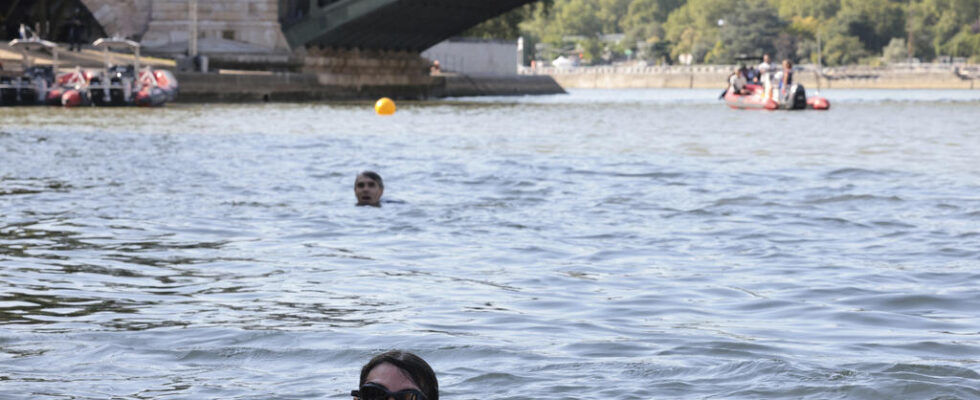The mayor of Paris, Anne Hidalgo, the head of Paris 2024, Tony Estanguet, and the prefect of Île-de-France, Marc Guillaume, took a dip in the Seine on Wednesday, July 17. This swim had one main goal: to prove that the water in the river is of good quality, enough to host the swimming events that are to be held there during the Olympic Games. But beyond the political communication operation, to which the Minister of Sports, Amélie Oudéa-Castera, first submitted on July 13, it is also the culmination of a century of attempts to return the river to Parisians.
2 min
Since 1923, the inhabitants of the capital were forbidden to bathe in the Seine. The fault, at the time, was the booming river traffic on the river. Until the 1960s, illegal bathing increased, but stopped as waste water was dumped into the Seine.
Until 1923, a hundred years ago, people bathed in the Seine
Bathing in the Seine was practiced under the Ancien Régime. In Paris, “the fashion for bathing in the Seine appeared in the middle of the 17th century along the Quai Sully,” according to a historical article published on the Paris City Hall websiteIt was then customary to bathe naked, a practice which would be banned at the end of the century.
In the following centuries, floating swimming pools were installed on the Seine, supplied by water from the river, according to the same source. The most famous, the Deligny swimming pool, named after one of the first swimming instructors who gave lessons along the quays of the 7th arrondissement, was built in 1801 on a dozen barges.
Around twenty similar pools coexisted in Paris at the end of the 19th century, before falling into disuse with the advent of “land” swimming pools.
In 1923, a prefectural decree prohibited swimming under penalty of a fine, “due to the dangers caused by river navigation and pollution”. A river brigade has ensured compliance with the ban since then.
(with AFP)
In 1988, Jacques Chiracthen campaigning for mayor of Paris, made a promise: people would be able to swim there within five years. Faced with skeptics, the former president persisted and signed in 1990 on a television set, and assured that he would be seen ” bathing in the Seine in front of witnesses ” three years later. This swim will never take place, and it is only in 2015 that a vast decontamination plan is launched. And for this, 1.4 billion euros are spent. A sum used in particular for the creation of rainwater retention basins and sewers.
Swimming in three dedicated sites
According to Paris City Hall, the 2024 Olympic Games have allowed us to gain ten years on the initial schedule. But It is in extremis that the Seine is clean for swimming. The latest surveys show that as it stands, athletes will be able to swim there safely. This summer, the Seine will host the triathlon (July 30 and 31, August 5), marathon swimming (August 8 and 9) and paratriathlon (September 1 and 2) events during the Olympic Games and Paralympic.
Next summer, it will be the turn of the general public. Because it is one of the legacies of the Olympic Games: Parisians will be able, in turn, to get their jerseys wet in three sites in the capital.
Read alsoThe Sewers of Paris: The Hidden Face of the City of Lights
